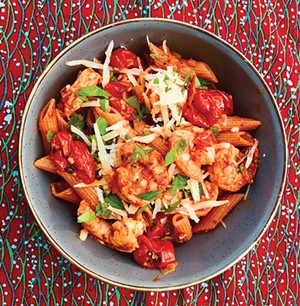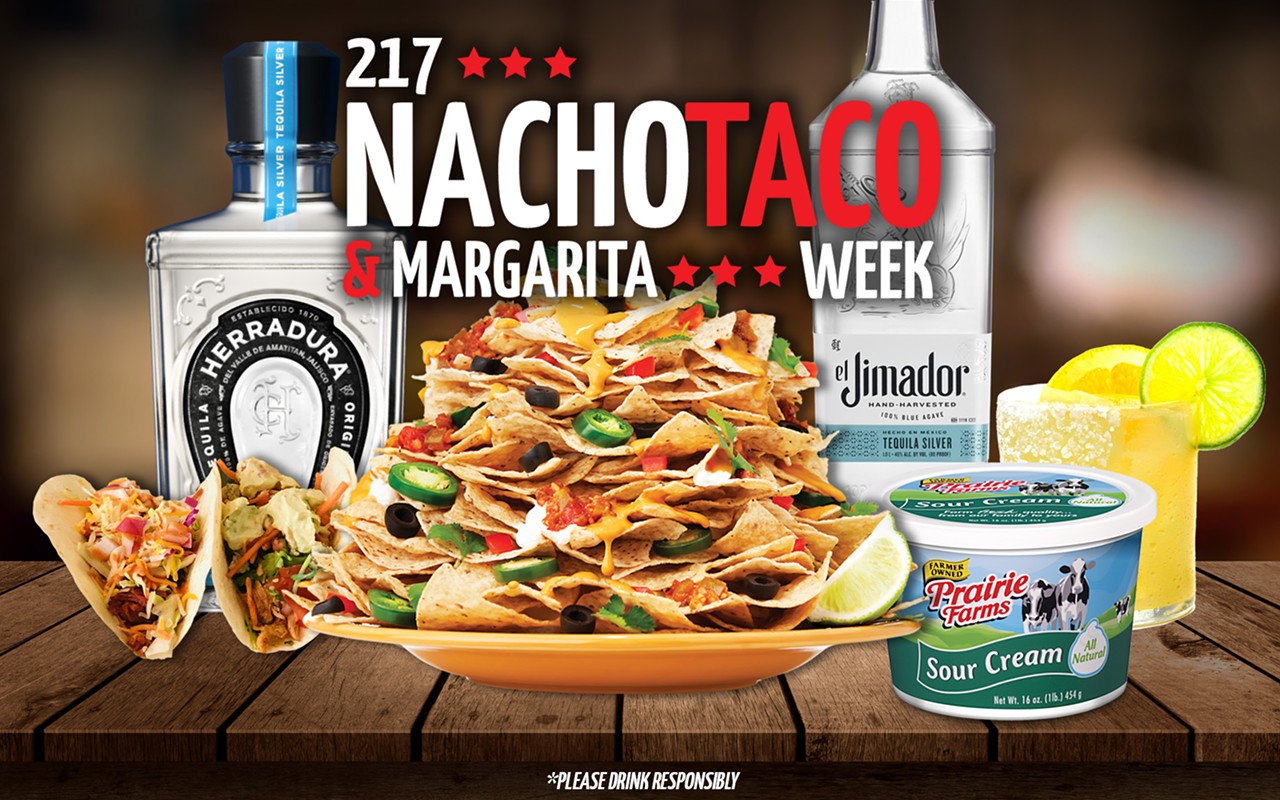About 12 years ago I started buying sausages and cured meats from Laurence Mate, an amateur charcuterie maker from Champaign. He had found a way around government regulations by selling memberships to a "buyers club" which he called This Little Piggy. The membership fee was one penny and members could obtain his homemade charcuterie by making a "donation." He was doing this more as a way of subsidizing his hobby, rather than making a profit. His production was small-scale and his inventory was unpredictable so whenever I made the 90-mile trip to his house I'd take anything he had to offer. One time he gave me a package of something I had never heard of: 'Nduja (pronounced en-Doo-ya). He described it as a spicy, spreadable Calabrian salami.
I am not timid about spicy heat, but his 'nduja was ridiculously hot! Made from pork trimmings and chili peppers, it was brick red and had the texture of soft braunschweiger. I didn't like it at first, but I found myself revisiting my fridge every so often to snitch little bites, and soon I was addicted.
Calabria is a region of southern Italy located at the toe of Italy's boot, known for its chili peppers. Calabria was one of Italy's poorest provinces and 'nduja was conceived as a way for the poor peasants to use the parts of the pig they couldn't sell, such as the lungs and kidneys. 'Nduja is a "salami dal spalmare," a spreadable salami made by grinding up pork fat and meat, seasoning with lots of spicy Calabrian chiles, and then aging in a pork casing. Unlike firm salumi, which is generally three parts meat to one part fat, the ratio for 'nduja flips to three parts fat to one part meat.
'Nduja isn't for everyone. It's not for timid palates. Ari Weinzweig, CEO of Zingerman's in Ann Arbor, describes it as "Spicy, slightly sweet, buttery, powerfully porky, yet as smooth in texture as homemade strawberry jam. 'Nduja is, almost inconceivably, both subtle and strong at the same time."
Modern Italian 'nduja cannot be imported into the U.S. unless it's been pasteurized, but fortunately we have some high-quality American-made versions that are made in the old-world style. La Quercia is an artisanal charcuterie producer based outside Des Moines, renowned for its prosciutto. They take the leftover end pieces and fat trimmings from the prosciutto production and blend them with three types of ground chilies to create a 'nduja which they label as "spicy prosciutto spread." Chicago's Tempesta Salumeria is operated by a fifth-generation 'nduja maker whose grandfather still lives in Calabria. They combine pork from heritage Berkshire hogs with a proprietary blend of five chiles and then age their 'nduja for several months. Both are available on amazon.com.
'Nduja has been called a "chef's secret weapon." Because it is fully cured and fermented, until its packaging is opened, it does not require refrigeration. When we moved out of our apartment at the start of the pandemic and began living on the road in our converted school bus, I stocked my pantry with several packages. Once opened, if tightly wrapped in plastic and stored in the fridge, 'nduja will keep for months.
In a time when health experts encourage us to move towards a predominantly plant-based diet, 'nduja fits well into the concept of meat playing a supporting role to the veggies, rather than being the main player. A dollop of 'nduja into a pan of veggies can effortlessly transform the dish from boring to complex. Because of its high fat content and soft spreadable texture, 'nduja melds easily into recipes. Though delicious right out of the packaging when spread onto crusty bread, it can be blended into soft cheeses like ricotta or a burrata. 'Nudja can add a layer of richness and spice to scrambled eggs. When gently fried in a bit of olive oil with some onions and garlic, it can be used as a base for pasta sauces or as a shellfish cooking broth. 'Nduja can be a tasty pizza topping and a smear can elevate your burger or grilled cheese sandwich.
Pasta with 'Nduja, Shrimp, and Cherry Tomatoes
Serves 2
Ingredients:
1/2 lb. tubular pasta
3 Tbsp. olive oil
1 cup onion, chopped
3 garlic cloves, finely chopped
½ lb. shrimp, peeled and deveined
2 cups cherry tomatoes
2 Tbsp. fresh basil, chiffonade
2 oz. 'nduja, casing removed
Zest of 1 lemon
Juice from ½ lemon
Kosher salt and black pepper to taste
Chopped fresh parsley leaves to garnish
Grated Parmesan, for serving
Preparation:
Put on a pot of salted water to boil.
Heat olive oil in a large saute pan over medium heat. Add onion and a pinch of salt and cook about 3 minutes, then add the garlic and cook about 3 minutes more, until onions and garlic are soft and lightly browned.
Add the cherry tomatoes and saute, stirring often, until they soften and start to blister, about 3 minutes.
Push the vegetables to the perimeter of the pan and add the shrimp and cook until pink. Drop in the 'nduja, a spoonful at a time, breaking it up. Then stir in the basil and lemon zest. Season with salt and pepper and set aside.
Add the pasta to the boiling water and cook until al dente. Drain pasta, reserving a little of the cooking liquid.
Put the pasta into the pan with the tomato and shrimp mixture, pour in a small amount of the reserved pasta cooking liquid, add the lemon juice, and gently stir together.
To serve, top with grated cheese and parsley.
Spicy 'Nduja Mussels
Recipe courtesy of La Quercia
Serves 2
Ingredients:
2 lbs. fresh mussels
2 Tbsp olive oil
¾ whole onion, thinly sliced
4-5 garlic cloves, finely chopped
1 cup white wine
2 Tbsp butter
4 oz. La Querica 'Nduja Americana
½ bunch parsley, chopped, plus some extra
Salt to taste
Bread for sopping up sauce
Preparation:
Thoroughly clean and debeard mussels, discarding any that are already open. Heat olive oil in a large pot over medium-high heat. Add onion, garlic, and a pinch of salt. Cook until onions and garlic are soft (being careful not to burn), about 6 minutes.
Add mussels, wine, butter, parsley, and tablespoon-size pieces of 'nduja to the pot. Season with a few dashes of salt, stir, and cover.
Shake pot occasionally (don't open the pot — you don't want to let any of the steam out). The mussels are done once most are opened, about 10-12 minutes. Discard any unopened mussels.
Top with remaining parsley, and serve with crusty bread.
Peter and Ann's summer jobs in Michigan's Upper Peninsula have come to a close and they are headed south in search of warmer weather and new cooking opportunities.


















